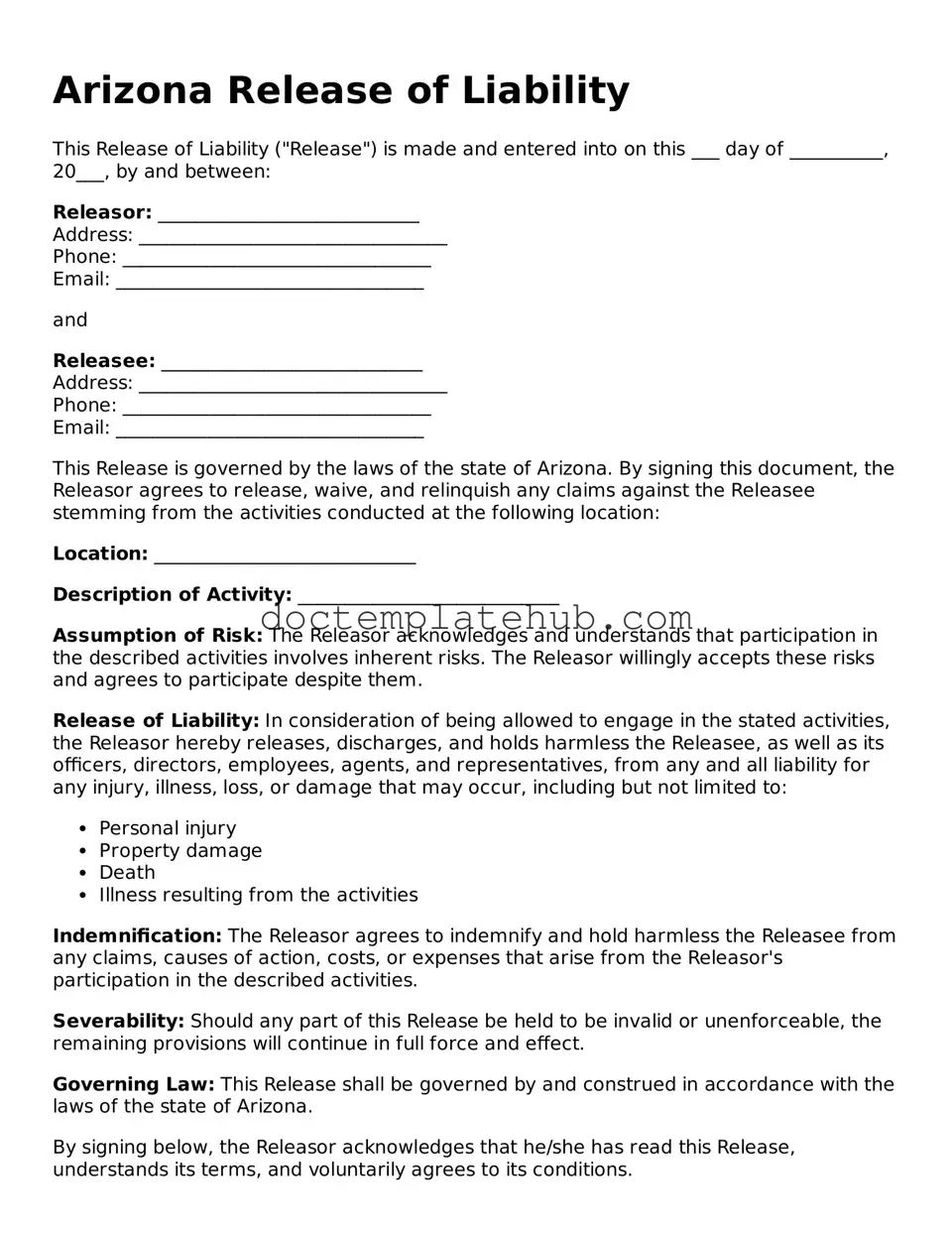What is the Arizona Release of Liability form?
The Arizona Release of Liability form is a legal document that individuals sign to waive their right to sue for injuries or damages that may occur during a specific activity or event. This form is often used in situations involving recreational activities, sports, or any event where there is a risk of injury. By signing, participants acknowledge the risks involved and agree not to hold the organizers or providers liable for any accidents that may occur.
Who should use the Arizona Release of Liability form?
This form is typically used by event organizers, businesses, or individuals who offer activities that carry inherent risks. Examples include sports leagues, adventure companies, and fitness instructors. Participants in these activities should also be aware of the form, as it protects both parties by clearly outlining the risks involved.
Is the Arizona Release of Liability form legally binding?
Yes, the Arizona Release of Liability form can be legally binding if it is properly drafted and executed. To ensure its enforceability, the form should clearly outline the risks, be signed voluntarily, and not contain any misleading language. However, courts may not enforce a release if it is deemed overly broad or if it attempts to waive liability for gross negligence.
Can minors sign the Arizona Release of Liability form?
Minors cannot legally sign contracts, including a Release of Liability form, without parental or guardian consent. Therefore, a parent or guardian must sign on behalf of a minor. This signature acknowledges the risks and waives liability for the minor’s participation in the activity.
What should be included in the Arizona Release of Liability form?
A comprehensive Release of Liability form should include several key components. It should clearly identify the parties involved, describe the activity and associated risks, state the intention to waive liability, and require the signature of the participant or their guardian. Additionally, it may include a statement indicating that the participant has read and understood the form.
Can someone still sue after signing the Arizona Release of Liability form?
While signing the form significantly limits the ability to sue, it does not completely eliminate the possibility. If a participant can prove that the organizer acted with gross negligence or intentional misconduct, a court may still allow a lawsuit to proceed. The effectiveness of the release depends on its language and the circumstances surrounding the injury.
How can I ensure my Arizona Release of Liability form is effective?
To create an effective Release of Liability form, it is advisable to consult with a legal professional familiar with Arizona law. The form should be clear, concise, and specific about the risks involved. It should also be presented in a manner that allows participants ample time to read and understand it before signing. Proper execution, including signatures and dates, is essential for enforceability.
Where can I obtain an Arizona Release of Liability form?
Arizona Release of Liability forms can be obtained from various sources. Many legal websites offer templates that can be customized for specific activities. Additionally, legal professionals can draft a form tailored to particular needs. It is crucial to ensure that any form used complies with Arizona state laws and addresses the specific circumstances of the activity.
